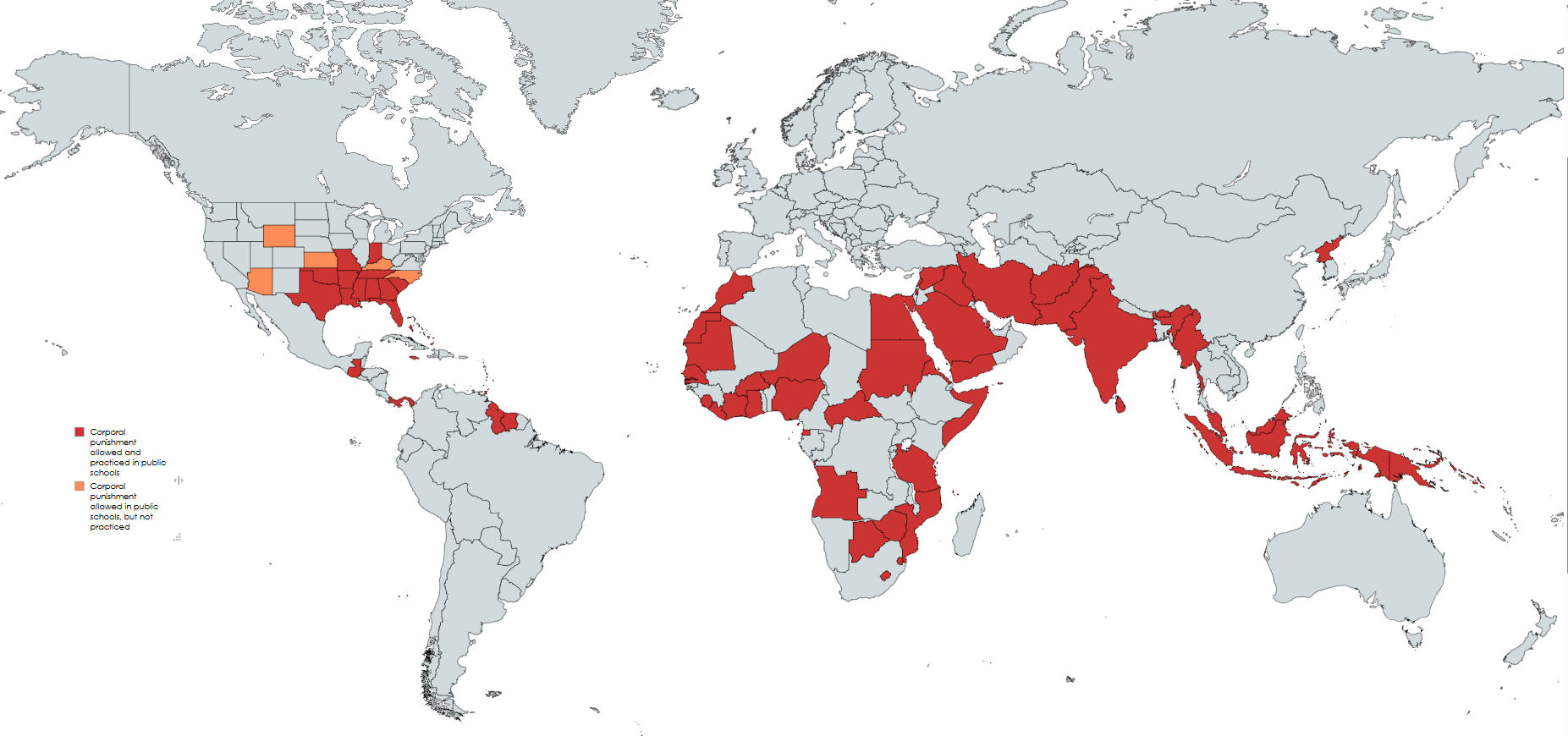Map of Corporal Punishment in Public Schools


Alex Cartwright
Senior Cartographer & GIS Specialist
Alex Cartwright is a renowned cartographer and geographic information systems specialist with over 15 years of experience in spatial analysis and data...
Geographic Analysis
What This Map Shows
The map titled "Where is Corporal Punishment Allowed in Public Schools" provides a visual representation of the states in the United States where corporal punishment is still legally permitted in public educational institutions. This form of discipline, which involves physical punishment such as paddling or spanking, raises significant debates about child welfare and educational practices. Interestingly, while many countries around the world have abolished corporal punishment in schools, the United States remains one of the few developed nations where this practice is still prevalent in certain states.
Deep Dive into Corporal Punishment
Corporal punishment in schools can be traced back to historical practices aimed at maintaining discipline and authority in educational settings. Despite the growing body of research that suggests physical punishment can lead to negative psychological outcomes, including increased aggression and anxiety in children, some states continue to endorse this practice. According to a report from the U.S. Department of Education, during the 2017-2018 school year, over 70,000 students experienced corporal punishment in schools, with the majority of these incidents occurring in Southern states.
Interestingly, the legality of corporal punishment varies significantly across the U.S. Currently, 19 states still allow corporal punishment in public schools, with Texas, Mississippi, and Alabama being the most notable for their high rates of occurrences. In these states, educators often use physical discipline as a means to enforce behavioral standards. Research indicates that the justification for corporal punishment often hinges on traditional beliefs regarding discipline and respect for authority. However, opponents argue that such methods are outdated and harmful, advocating for more constructive approaches to behavioral management.
What's fascinating is the demographic breakdown of students subjected to corporal punishment. Studies have shown that boys, particularly African American boys, are disproportionately affected by corporal punishment practices. This raises critical questions about equity and fairness in educational discipline and the broader implications for students' long-term educational experiences and mental health.
Regional Analysis
The map clearly illustrates that the majority of states permitting corporal punishment are located in the Southern United States. States like Texas and Arkansas stand out not only for their legal allowance but also for their high rates of implementation. For instance, in Texas, over 15,000 students faced corporal punishment in the 2017-2018 academic year alone. Conversely, states such as California and New York have taken strides to ban corporal punishment altogether, reflecting a growing trend towards more progressive disciplinary methods based on psychological research.
Moreover, the cultural context plays a significant role in these regional differences. In many Southern states, traditional views on discipline and respect for authority are still deeply rooted, influencing public opinion and policy decisions. On the other hand, states that have abolished corporal punishment often emphasize positive behavioral interventions, showcasing a shift towards fostering a supportive learning environment.
Significance and Impact
The topic of corporal punishment in public schools is not just about discipline; it touches on broader societal issues including child rights, educational equity, and mental health. The ongoing debate highlights a critical intersection between cultural values and educational practices. As awareness about the negative implications of corporal punishment grows, many advocates are pushing for legislative changes that prioritize the well-being of students over traditional punitive measures.
As we look to the future, it is essential to consider how educational policies can evolve to better support students. With an increasing number of states moving towards banning corporal punishment, there is hope that a more humane approach to discipline will prevail, fostering an educational environment that prioritizes respect and psychological well-being. Furthermore, it poses the question: how can schools implement effective disciplinary measures that do not involve physical punishment? The path forward will require a concerted effort from educators, policymakers, and communities to reshape the narrative around discipline in schools.
In conclusion, the map of corporal punishment in public schools serves as a critical reminder of the ongoing debates surrounding educational practices and child welfare. Understanding where and why corporal punishment is still permitted can help inform future policies and educational reforms aimed at creating safer and more equitable learning environments for all students.
Visualization Details
- Published
- October 22, 2025
- Views
- 10
Comments
Loading comments...